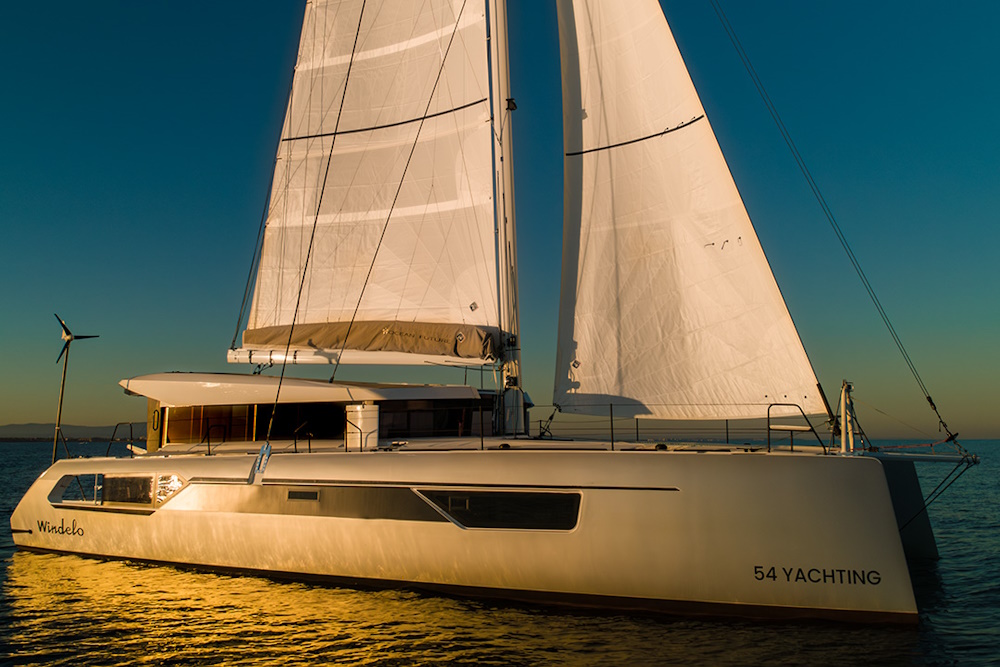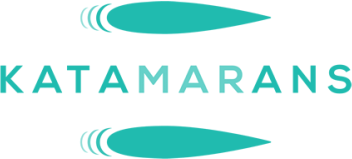The New Windelo 54
Windelo relaunched its flagship catamaran in 2024. Like the new Windelo 50, the new 54 now has a longer, sleeker coachroof to maximise solar power.
Let’s take a look at some of the other features of this eco-performance catamaran that help her stand out from the crowd.
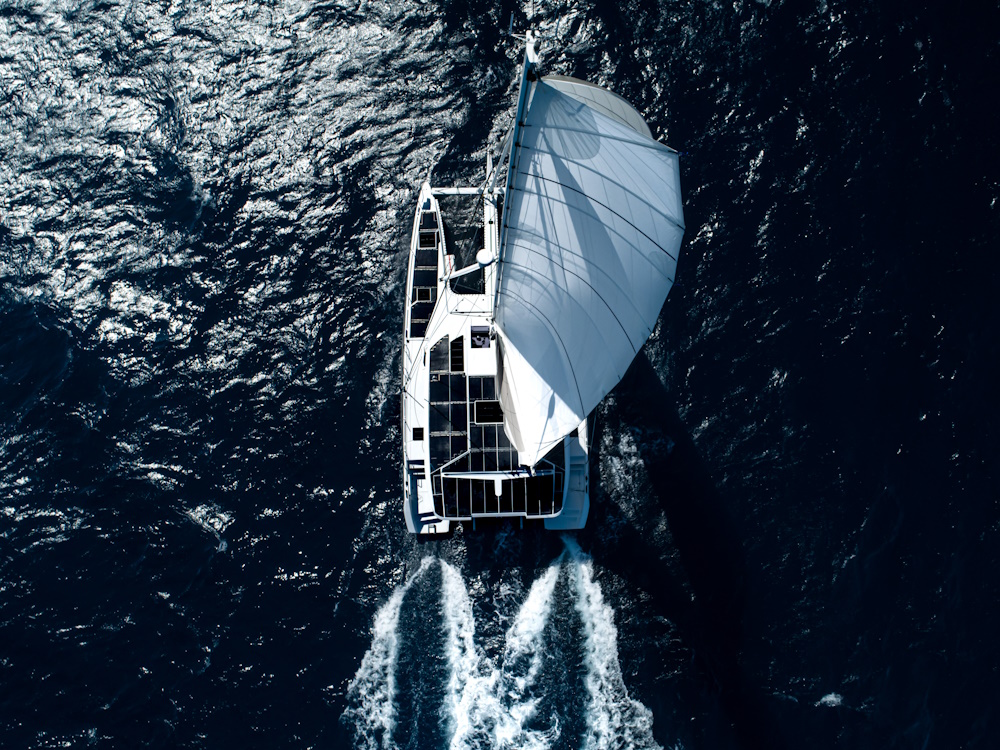
Recycled and Bio-Sourced Materials
One of the key things that differentiates this boat from the competition is her construction. Sustainability and ecology are some of the key aims of Windelo and they have taken an uncompromising approach to the build of these yachts to achieve this. They use volcanic basalt and PET foam – made from recycled bottle plastic – in the hull construction – which makes Windelo the leader of the pack in this area.
Windelo catamarans are made from an innovative environmentally-friendly composite sandwich. This basalt fiber and PET foam sandwich reduces carbon emissions by nearly 50% compared with traditional GRP composite manufacturing methods.
more…
Basalt is a natural volcanic fiber that offers vibration resistance and durability while still maintaining a high strength-to-weight ratio. These Basalt laminates are used to construct a stiff, light, and sustainable hull compared to traditional fiberglass construction. The basalt fiber has high fire resistance, high heat resistance, and good mechanical features. The basalt fiber can be fully recycled in the oven.
If you need to make any repairs on a round-the-world sailing trip, basalt fiber is fully compatible with fiberglass.
10 Windelo 54 Facts!
PET foam

Many yachts’ hulls are constructed using a foam core.
PET (polyethylene terephthalate) – is made mainly from reused drinking bottles – it is both light and 100% recycled. PET foam is a key part of the jigsaw that ensures that Windelo catamarans are kinder to the environment than traditionally constructed rivals.
PET foam is made from recycled PET, mainly from reused old drinking bottles which are crushed into very small pieces and then melted again to create PET foam. During the production process, the PET core produces half the CO2 than PVC core production does, PVC being a traditional material for naval construction.
Windelo uses a mix of PET foam and PVC to achieve the structural demands of their performance catamarans. PET foam is used for 56% of the construction.
They are currently working with their PET foam supplier to steadily increase the quantity of PET foam they use in their boats.
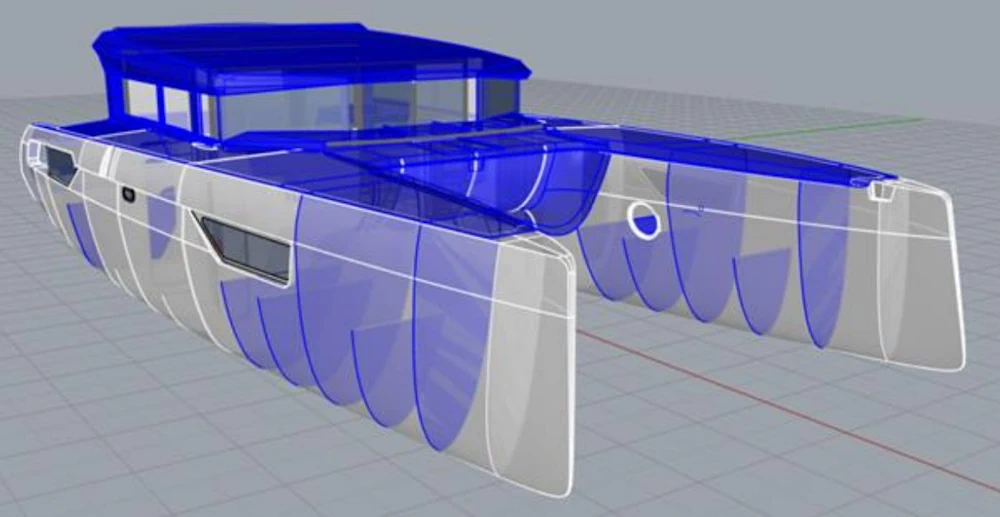
In the image above, the blue areas represent the hull structure made with the eco-composite (Basalt and PET foam).
Basalt fibre and PET foam have been tailored to the structure but also used in indoor fittings, furniture, and floors, which optimize the weight of the Windelo catamarans.
FSC Wood (Forestry Stewardship Council)
FSC wood is used throughout Windelo’s interior. All of the wood has been certified by the Forestry Stewardship Council and has attained the high standards of the council to ensure the wood is sourced in an environmentally responsible and socially beneficial manner.
Energy Production
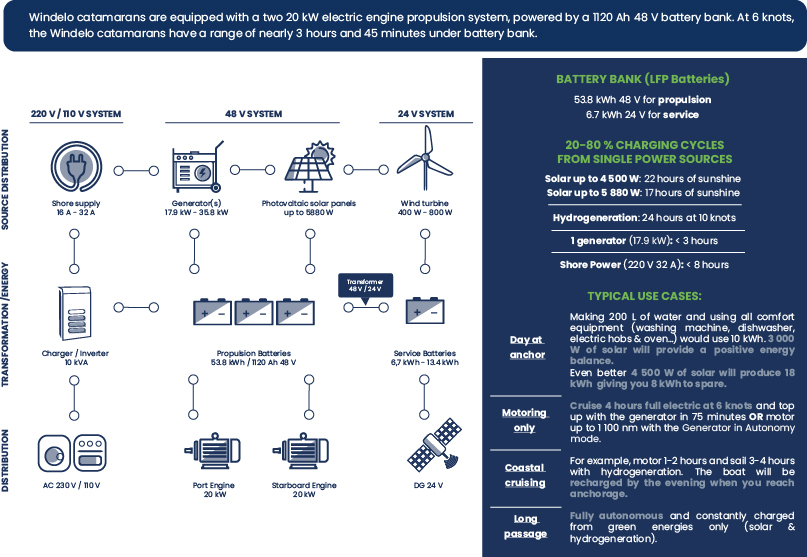
The other key area that Windelo has been focusing on is Energy Production. These are sailing boats, so they already score highly in that regard, but Windelo have gone one-step further by developing a safe eco-friendly power system and management tool that has been tested across oceans. The combination of electric power, a huge solar area, hydrogeneration and wind turbines allow Windelo to minimise the use of diesel to power the backup generators on these boats
Green Energy Production
Windelos are powered by electric motors, but these are long-distance cruisers that need to have a good cruising range. Using hydro generation, solar panels, wind turbines, and backup generators the Windelo can cruise more than 1100 nautical miles at 6 knots under power. Of course, these boats are designed to get sailing in light winds, but it is good to know you have a backup.
At 6 knots, the New Windelo 54 has a range of nearly 4 hours (about 22.7 nm with its 1120 Ah battery bank).
Hydro-generation
Windelo catamarans are designed to be sailed. As soon as you are sailing, will be able to generate electrical power, as the propellers switch to
hydro-generator mode when the motors are not in use.
On a Windelo catamaran, you generate an average of 1 kWh per engine, sailing at 10 knots. With only hydrogeneration power to recharge your battery bank, you will completely recharge your battery bank in one day under sail.
Hydrogeneration will slow the boat by around half a knot to a maximum of 1 knot.
Solar Panels
A catamaran has a huge platform for solar power generation thanks to its large amount of flat surface area on its deck. Windelo catamarans are designed to maximise this available space with walkable solar panels on the roof and decks.
On the New Windelo 54, you can generate up to 5,880 W of peak solar power.
If you only use solar energy to recharge your battery bank, with 5,880W of solar panels, you will fully recharge your batteries in 17 hours of sunshine (based on average sunshine in the Mediterranean).
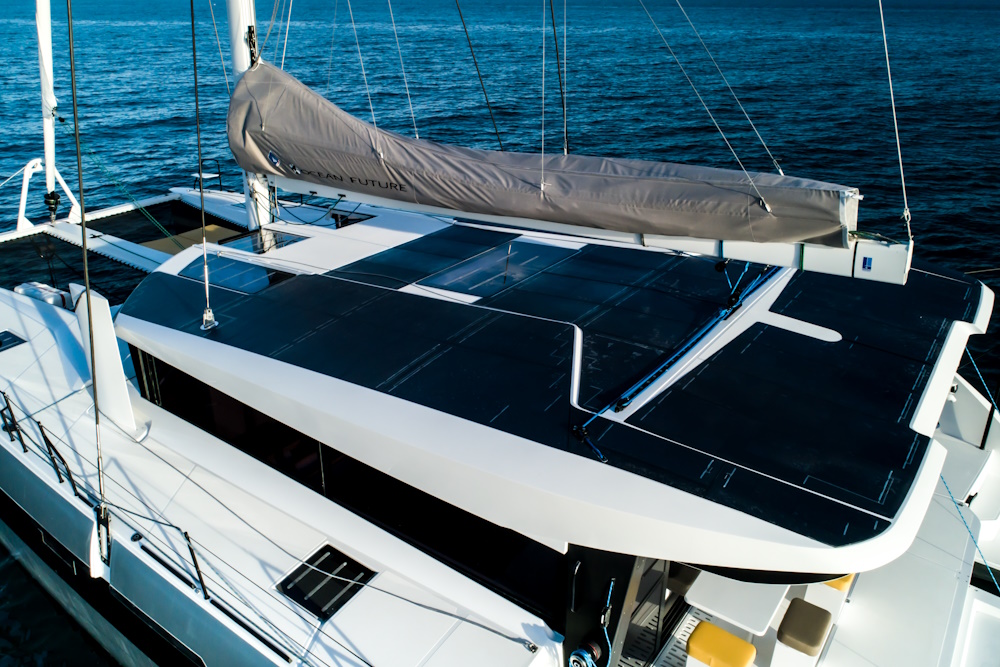
Wind Turbines
Windelo catamarans can also be equipped with a 400W wind turbine to charge the battery pack regardless of the sunshine. With an apparent wind speed of 12 knots, two wind turbines will charge an additional 2,4 kWh per day.
Add these power generation methods up and you have a powerful system for recharging your batteries. And of course, there is a backup generator for safety, but the idea is to minimise its use.
The Electric Drive System
All this is designed to power the Windelo’s electric hybrid drive system so that you can navigate quietly even when the sails are down.
This not only makes for a quieter, more pleasurable experience, but it also reduces fatigue and helps the whole crew to sleep more soundly on passage.
Electric Hybrid
Windelo catamarans have two 20kW electric shaft-drive engines with a 1120Ah 48V lithium battery bank (53,8kWh).
These brushless engines have minimal wear and tear or need for spare parts (no belts for example), and very little maintenance.
Windelo’s 1120Ah 48V lithium battery bank recharges using solar power, hydrogenation, and wind power first.
When sailing on the motor, the Windelo 50 consumes 9.09kW at 6 knots, 15.57kW at 7 knots, and 27kW at 8 knots.
At 6 knots, the Windelo 50 has a range of around 3 hours and 45 minutes (roughly 22.7nm per day with an 1120Ah battery bank).
When the energy consumed is not compensated by renewable energies, the 18-kW backup 500L diesel generator (there is an option to add another) starts up to supply the electric motors and recharge the batteries. The Boat Management System starts up the generator automatically when the batteries are low and/or when the power required is greater than the power the batteries can supply. Including generators, the full cruising range of the motor is 1100 nautical miles.
For more detail on the Windelo electric drive system watch this video :
An Intelligent Boat Management System
Navigation and life on board need a range of equipment that produces and consumes energy. To manage this, Windelo and its partners have developed a robust central management system with the software to drive it. This gives you a global vision of your energy consumption and production.
You can manage the electric propulsion system, battery and tank levels, lighting, electricity and electronics onboard, battery charge status, navigation instruments, maintenance, etc all on one console.
Summary
Windelo Catamarans are leaders in the manufacture of eco-performance catamarans. From their construction methods to the power set up on their boats, they are leading the pack in this rapidly growing segment of the market with yachts that have proven the technology with multiple ocean crossings.
More information on the Windelo 54
